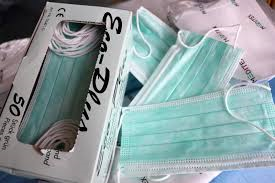
Clean Hands is a Recipe for Avoiding the Flu
According to the Centers for Disease Control and Prevention (CDC), handwashing can help prevent illness. The correct way to wash your hands involves five simple and effective steps.
- Wet your hands with clean, running water (warm or cold), turn off the tap, and apply soap.
- Lather your hands by rubbing them together with soap. Be sure to lather the backs of your hands, between your fingers and under your nails.
- Scrub your hands for at least 20 seconds. If you aren’t sure how much time 20 seconds is, try humming the “Happy Birthday” song from beginning to end twice.
- Rinse your hands well under clean, running water. Soap and friction help lift dirt, grease and microbes including disease-causing germs from the skin, so they can be rinsed off the hands when you rinse. Rinsing can also help minimize skin irritation.
- Dry your hands using a clean towel or air dry them if no towel is available. Regular handwashing, particularly before and after certain activities, is one of the best ways to remove germs, avoid getting sick and prevent the spread of germs to others. It’s quick, simple and one of the most effective ways to stay healthy. When we wash our hands correctly, we win, and the germs lose. When to Wash Your Hands Before, during, and after preparing food Before eating food Before and after caring for someone who is sick Before and after treating a cut or wound After using the toilet After changing diapers or cleaning up a child who has used the toilet After blowing your nose, coughing, or sneezing After touching an animal, animal feed, or animal waste After handling pet food or pet treats After touching garbage
Hand Sanitizers versus Washing Hands Many people believe that a bottle of hand sanitizer is a good way to disinfect their hands but how effective is hand sanitizer compared to washing your hands with soap and water? Alcohol-based hand sanitizers can reduce the number of germs on hands in some situations, but sanitizers do not eliminate all types of germs. Always use an alcohol-based hand sanitizer that contains at least 60 percent alcohol. Here’s how to use hand sanitizer properly:
- Apply the product to the palm of one hand.
- Rub your hands together.
- Rub the product over all surfaces of your hands and fingers until your hands are dry.
Alcohol-based hand sanitizers can be used in addition to hand washing but should not be used as a substitute for washing with soap and water. While alcohol-based hand sanitizers (particularly those with 60 percent alcohol or more) can reduce the number of some germs, the CDC says soap and water is better, especially for reducing Cryptosporidium, Clostridium difficile and norovirus. Proper hand-washing is best, but when soap and water aren’t available, hand sanitizers can be a substitute for on-the-go cleaning. Also, keep in mind, if your hands are visibly dirty hand sanitizers are not effective.
Resources:



